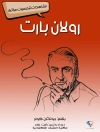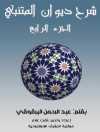‚English literature, ‚ Yeats once noted, ‚has all but completely shaped itself in the printing press.‘ Finding this true particularly of modernist writing, Jerome Mc Gann demonstrates the extraordinary degree to which modernist styles are related to graphic and typographic design, to printed letters–‚black riders‘ on a blank page–that create language for the eye. He sketches the relation of modernist writing to key developments in book design, beginning with the nineteenth-century renaissance of printing, and demonstrates the continued interest of postmodern writers in the ‚visible language‘ of modernism. Mc Gann then offers a philosophical investigation into the relation of knowledge and truth to this kind of imaginative writing.
Exploring the work of writers like William Morris, Emily Dickinson, W. B. Yeats, Ezra Pound, and Gertrude Stein, as well as Laura Riding and Bob Brown, he shows how each exploits the visibilities of language, often by aligning their work with older traditions of so-called Adamic language. Mc Gann argues that in modernist writing, philosophical nominalism emerges as a key aesthetic point of departure. Such writing thus develops a pragmatic and performative ‚answer to Plato‘ in the matter of poetry’s relation to truth and philosophy.
Über den Autor
Jerome Mc Gann, Commonwealth Professor of English at the University of Virginia, is well known for his unique approach to printed texts as historical and physical artifacts. His many books include
A Critique of Modern Textual Criticism (Virginia).












